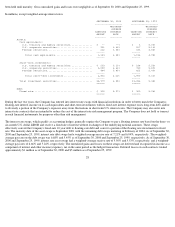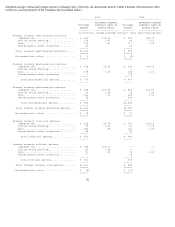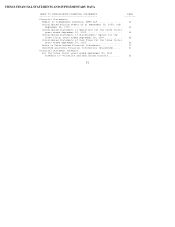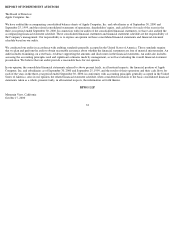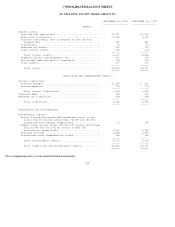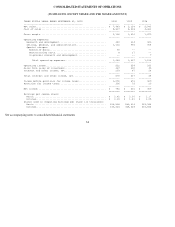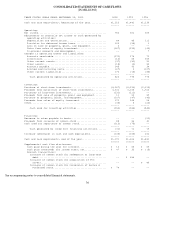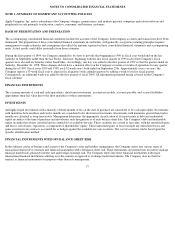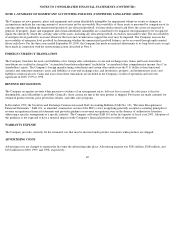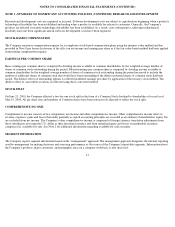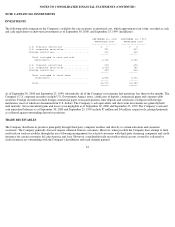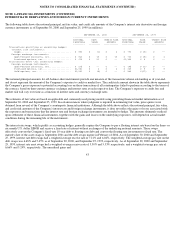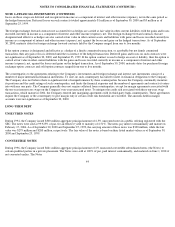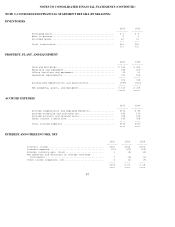Apple 2000 Annual Report Download - page 40
Download and view the complete annual report
Please find page 40 of the 2000 Apple annual report below. You can navigate through the pages in the report by either clicking on the pages listed below, or by using the keyword search tool below to find specific information within the annual report.NOTES TO CONSOLIDATED FINANCIAL STATEMENTS
NOTE 1--SUMMARY OF SIGNIFICANT ACCOUNTING POLICIES
Apple Computer, Inc. and its subsidiaries (the Company) designs, manufactures, and markets personal computers and related software and
peripherals for sale primarily to education, creative, consumer, and business customers.
BASIS OF PRESENTATION AND PREPARATION
The accompanying consolidated financial statements include the accounts of the Company. Intercompany accounts and transactions have been
eliminated. The preparation of these consolidated financial statements in conformity with generally accepted accounting principles requires
management to make estimates and assumptions that affect the amounts reported in these consolidated financial statements and accompanying
notes. Actual results could differ materially from those estimates.
During the first quarter of 1999, the Company amended its by-laws to provide that beginning in 1999 its fiscal year would end on the last
Saturday in September rather than the last Friday. Likewise, beginning with the first fiscal quarter of 1999 each of the Company's fiscal
quarters now also end on Saturday rather than Friday. Accordingly, one day was added to the first quarter of 1999 so that the quarter ended on
Saturday, December 26, 1998. These changes did not have a material effect on the Company's revenue or results of operations for any quarter
during fiscal 1999. Fiscal years 1999 and 1998, each 52-week years, both ended on September 25th. Approximately every six years, the
Company reports a 53-week fiscal year to align its fiscal quarters with calendar quarters by adding a week to its first fiscal quarter.
Consequently, an additional week was added to the first quarter of fiscal 2000. All information presented herein is based on the Company's
fiscal calendar.
FINANCIAL INSTRUMENTS
The carrying amounts of cash and cash equivalents, short-term investments, accounts receivable, accounts payable, and accrued liabilities
approximate their fair value due to the short maturities of those instruments.
INVESTMENTS
All highly liquid investments with a maturity of three months or less at the date of purchase are considered to be cash equivalents. Investments
with maturities between three and twelve months are considered to be short-term investments. Investments with maturities greater than twelve
months are classified as long-term assets. Management determines the appropriate classification of its investments in debt and marketable
equity securities at the time of purchase and reevaluates such designation as of each balance sheet date. The Company's debt and marketable
equity securities have been classified and accounted for as available-for-
sale. These securities are carried at fair value, with the unrealized gains
and losses, net of taxes, reported as a component of shareholders' equity. These unrealized gains or losses include any unrealized losses and
gains on interest rate contracts accounted for as hedges against the available-for-sale securities. The cost of securities sold is based upon the
specific identification method.
FINANCIAL INSTRUMENTS WITH OFF-BALANCE-SHEET RISK
In the ordinary course of business and as part of the Company's asset and liability management, the Company enters into various types of
transactions that involve contracts and financial instruments with off-balance-sheet risk. These instruments are entered into in order to manage
financial market risk, primarily interest rate and foreign exchange risk. The Company enters into these financial instruments with major
international financial institutions utilizing over-the-counter as opposed to exchange traded instruments. The Company does not hold or
transact in financial instruments for purposes other than risk management.
37



